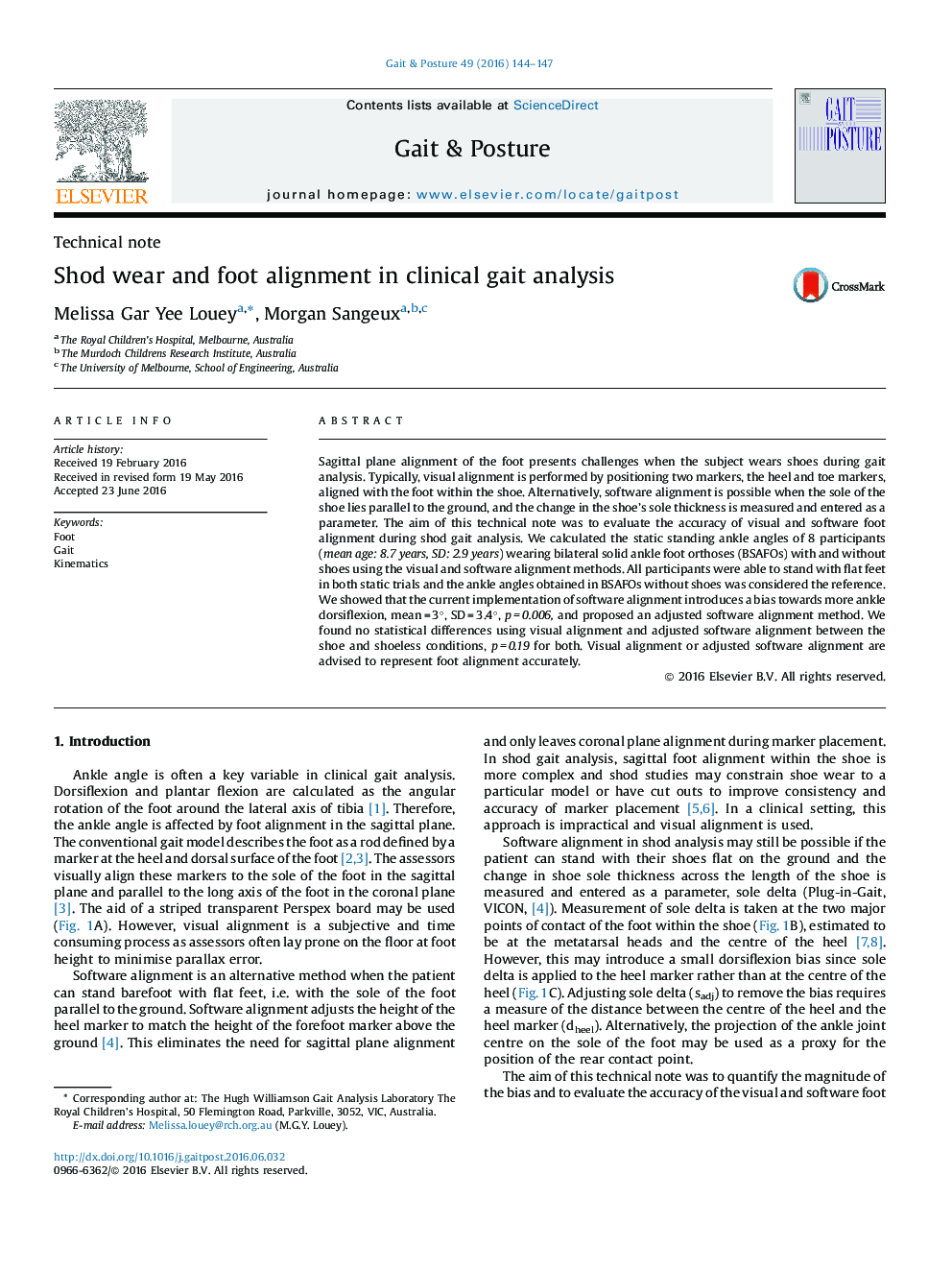| Article ID | Journal | Published Year | Pages | File Type |
|---|---|---|---|---|
| 6205529 | Gait & Posture | 2016 | 4 Pages |
â¢Established the accuracy of foot alignment methods during shod analysis.â¢Showed that visual alignment may be accurate.â¢Showed that a dorsiflexion bias exists with current software alignment.â¢Proposed an adjusted foot alignment method without dorsiflexion bias.
Sagittal plane alignment of the foot presents challenges when the subject wears shoes during gait analysis. Typically, visual alignment is performed by positioning two markers, the heel and toe markers, aligned with the foot within the shoe. Alternatively, software alignment is possible when the sole of the shoe lies parallel to the ground, and the change in the shoe's sole thickness is measured and entered as a parameter. The aim of this technical note was to evaluate the accuracy of visual and software foot alignment during shod gait analysis. We calculated the static standing ankle angles of 8 participants (mean age: 8.7 years, SD: 2.9 years) wearing bilateral solid ankle foot orthoses (BSAFOs) with and without shoes using the visual and software alignment methods. All participants were able to stand with flat feet in both static trials and the ankle angles obtained in BSAFOs without shoes was considered the reference. We showed that the current implementation of software alignment introduces a bias towards more ankle dorsiflexion, mean = 3°, SD = 3.4°, p = 0.006, and proposed an adjusted software alignment method. We found no statistical differences using visual alignment and adjusted software alignment between the shoe and shoeless conditions, p = 0.19 for both. Visual alignment or adjusted software alignment are advised to represent foot alignment accurately.
